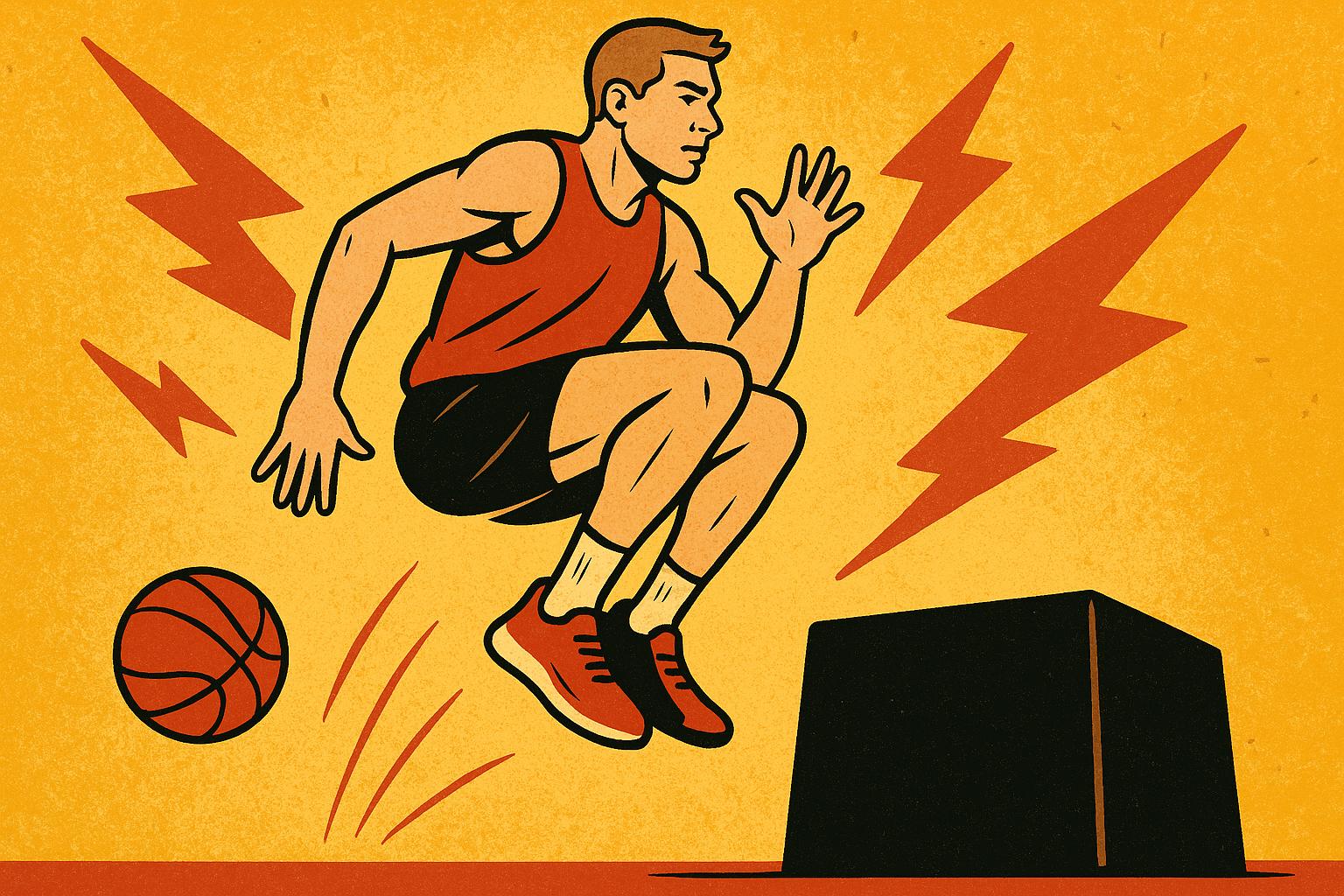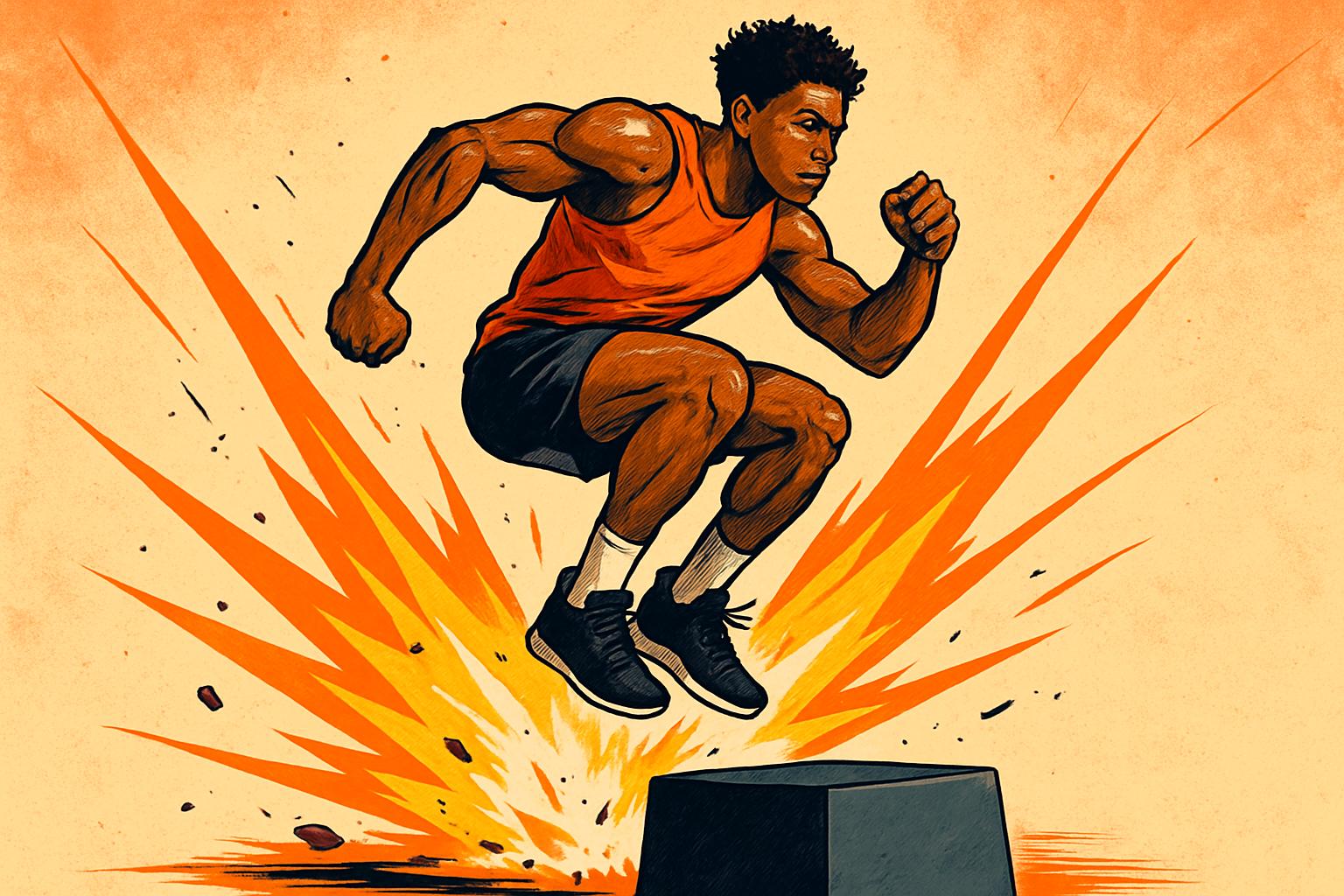Elevating Your Jump: The Best Plyometric Exercises
Jumping is one of the most explosive movements the human body can perform. Whether you’re looking to elevate your basketball game, improve your volleyball skills, or simply enhance your athleticism, plyometric exercises are your key to increasing your jumping ability. Plyometrics, often called “jump training,” focus on explosive movements that enhance muscle strength, speed, and coordination. This training helps you develop power in your legs, making you jump higher and more efficiently.
In this article, we’ll dive into the best plyometric exercises that will take your jumping ability to new heights. From box jumps to broad jumps, and from depth jumps to single-leg drills, we’ll explore the exercises that train your body to react explosively and powerfully. By understanding the science behind plyometrics and incorporating the right exercises into your routine, you’ll see rapid improvements in your vertical leap.
Understanding Plyometrics: The Power of Explosive Movements
Plyometric exercises involve rapid, forceful contractions of muscles, utilizing the stretch-shortening cycle (SSC) to develop speed and power. This cycle occurs when a muscle is quickly stretched (eccentric action) and then immediately contracted (concentric action) to produce a powerful movement. Plyometric training focuses on this process, training your muscles to react quickly and explosively.
The SSC is crucial for jumping because it helps your muscles absorb force and then release it to propel you upward or forward. Plyometric training targets your fast-twitch muscle fibers, which are responsible for quick and explosive movements, enhancing your ability to jump higher and move faster.
Box Jumps: A Classic Plyometric Move for Explosive Power
One of the most effective and widely used plyometric exercises to boost your jumping ability is the box jump. This exercise involves jumping onto a raised platform or box, which targets your lower body muscles and improves your vertical jump. Box jumps are excellent for developing explosive power in your legs, particularly in the quads, hamstrings, and glutes.
To perform a box jump, stand in front of a sturdy box or platform with your feet shoulder-width apart. Lower your body into a slight squat, swinging your arms back to prepare for the jump. Explosively jump onto the box, landing softly with your knees slightly bent. Step down carefully and repeat. Start with a lower box and gradually increase the height as you build strength and confidence. The higher the box, the greater the challenge to your leg power.
Box jumps are great for training your muscles to generate maximum force quickly, which directly translates into a higher vertical leap. The explosive movement activates your fast-twitch muscle fibers, allowing you to jump higher with more speed and force.
Depth Jumps: Training Your Reaction Speed
Depth jumps are another essential plyometric exercise that can significantly improve your jumping ability. This movement focuses on enhancing your reaction time and explosiveness after landing. Depth jumps work by teaching your muscles to absorb the impact of landing and then quickly explode back up into another jump.
To perform a depth jump, start by standing on a raised platform or box. Step off the box and allow your body to fall freely, landing softly on the ground with both feet. Upon landing, immediately jump as high as you can, using the energy from the landing to propel yourself upward. Depth jumps train your body to react quickly after absorbing force, which improves your ability to explode off the ground for a higher jump.
This exercise is particularly beneficial for athletes who need to quickly transition from landing to jumping, such as in basketball or volleyball. The fast-paced nature of the depth jump enhances your body’s ability to move explosively, improving your vertical leap and overall agility.
Broad Jumps: Increasing Horizontal and Vertical Power
The broad jump, or standing long jump, is another fantastic plyometric exercise that targets both horizontal and vertical power. Unlike vertical jumps, broad jumps focus on maximizing your distance in a forward direction, helping you develop explosive power in both directions. This movement engages the glutes, quads, hamstrings, and calves, providing a full-body workout that improves your jumping ability and coordination.
To perform a broad jump, start by standing with your feet shoulder-width apart and your knees slightly bent. Swing your arms backward and then explosively jump forward as far as you can, using the power from your legs to propel yourself. Upon landing, make sure to absorb the impact by bending your knees slightly to prevent injury. Repeat the jump for a set of repetitions.
Broad jumps are a great way to enhance both your vertical and horizontal leaping ability, improving your overall power and explosiveness. The movement focuses on a quick, powerful takeoff, which directly translates into a higher vertical jump when performed in combination with other exercises.
Single-Leg Plyometrics: Building Stability and Balance
While both legs contribute to a strong vertical jump, many athletes fail to realize the importance of single-leg strength and coordination. Single-leg plyometric exercises help build stability, balance, and power on each leg individually. These exercises improve your ability to control your body during takeoff and landing, ensuring that each leg generates equal power and force.
Single-leg box jumps are one example of a single-leg plyometric exercise. To perform a single-leg box jump, start by standing on one leg in front of a sturdy box or platform. Lower your body slightly and then explosively jump onto the box, landing softly with the same leg. Step down carefully and repeat with the other leg. This exercise not only builds strength in each leg but also improves coordination and balance, which are essential for a smooth, explosive jump.
Incorporating single-leg plyometrics into your routine can help address muscle imbalances and improve overall jumping efficiency, especially for sports that require quick, controlled movements and direction changes.
Tuck Jumps: Mastering the Art of Vertical Jumping
Tuck jumps are a great plyometric exercise to help you develop pure vertical jump power. This movement focuses on getting as high off the ground as possible, improving your ability to generate explosive upward force. Tuck jumps engage the quads, hamstrings, glutes, and calves, making them a powerful tool for improving vertical leap height.
To perform a tuck jump, stand with your feet shoulder-width apart and your knees slightly bent. Jump as high as you can, bringing your knees toward your chest in a tucked position while in the air. Land softly on your feet and immediately jump again. Repeat the movement for several reps.
Tuck jumps force you to focus on maximum height and control, training your body to generate as much power as possible in each jump. This exercise improves your ability to jump higher, develop explosive power, and increase coordination, all of which contribute to a higher vertical leap.
Skater Jumps: Enhancing Lateral Power and Agility
While vertical jump training is critical for increasing jumping height, lateral movement and agility are also essential components of overall jumping ability. Skater jumps are a plyometric exercise that focuses on developing explosive lateral power, improving your ability to jump and change direction quickly.
To perform a skater jump, start in a standing position with your knees slightly bent. Jump laterally to one side, landing on one foot while keeping your opposite foot off the ground. Immediately jump laterally to the other side, landing on the opposite foot. Continue jumping back and forth, focusing on power and control.
Skater jumps are beneficial for sports that require quick direction changes and explosive movements, such as basketball, soccer, and tennis. By incorporating this exercise into your plyometric routine, you’ll improve your lateral agility and power, which are essential for quick jumps and movements.
Advanced Plyometric Training for Maximum Jumping Ability
Once you’ve mastered the basic plyometric exercises, you can begin to increase the intensity and challenge your body further. Advanced plyometric exercises, such as plyometric push-ups or resisted jumps (using resistance bands or weighted vests), help increase the demand on your muscles, enhancing strength and explosiveness even more.
As you progress with your plyometric training, focus on improving your jump height, speed, and reaction time. Experiment with different variations of the exercises to keep your body challenged and prevent plateauing. The key to mastering plyometrics is consistency, dedication, and pushing your limits in a safe, controlled environment.
A Plyometric Workout Plan to Boost Jumping Ability
To help you get started with plyometric training, here’s a sample workout plan designed to boost your jumping ability. This plan includes a mix of exercises targeting explosive power, strength, and agility, ensuring a well-rounded approach to jump training.
Day 1: Lower Body Power and Explosiveness
Warm-up: 5-10 minutes of light cardio and dynamic stretching
Box Jumps: 3 sets of 8 reps
Depth Jumps: 3 sets of 6 reps
Broad Jumps: 3 sets of 5 reps
Tuck Jumps: 3 sets of 8 reps
Single-Leg Box Jumps: 2 sets of 5 reps per leg
Cool down: Static stretching and foam rolling
Day 2: Speed and Agility
Warm-up: 5-10 minutes of light cardio and dynamic stretching
Skater Jumps: 3 sets of 10 reps per side
Ladder Drills: 4 sets of each drill
Cone Drills: 3 sets of 5 reps each drill
Plyometric Push-ups: 3 sets of 10 reps
Cool down: Static stretching and foam rolling
Day 3: Recovery and Mobility
Active recovery: 20-30 minutes of light cardio (walking, swimming)
Foam rolling: 10-15 minutes focusing on quads, hamstrings, calves, and glutes
Yoga or stretching routine: 30 minutes
Repeat this schedule for 4-6 weeks, gradually increasing the intensity and volume of the exercises as you progress. Plyometric training requires dedication and consistent effort, but the results will speak for themselves as you develop a higher, more explosive vertical jump.
Jumping into Your Full Potential
Incorporating these plyometric exercises into your training routine will lead to significant improvements in your vertical jump and overall athletic performance. By training explosiveness, power, speed, and agility, you’ll increase your jumping ability and take your game to the next level. Stay consistent, challenge yourself, and enjoy the process as you jump higher than ever before. The sky’s the limit—let your training elevate you to new heights!




